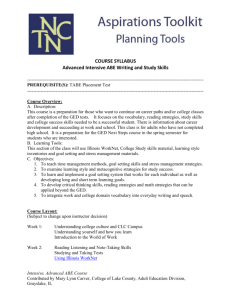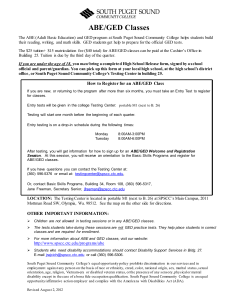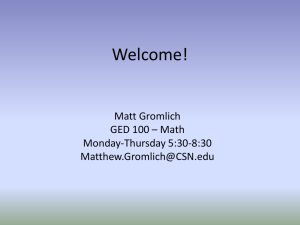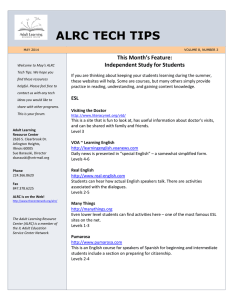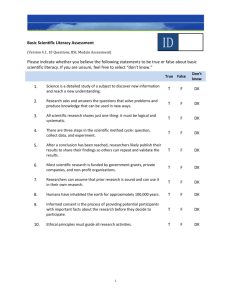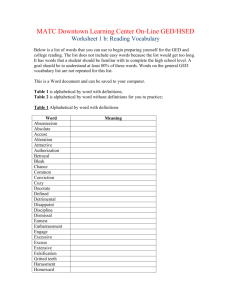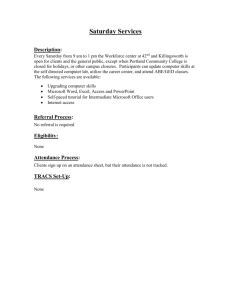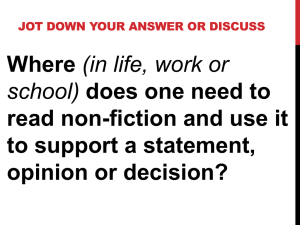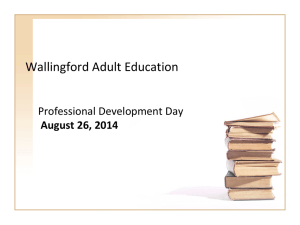Student-Run Open House Helps Recruitment
advertisement
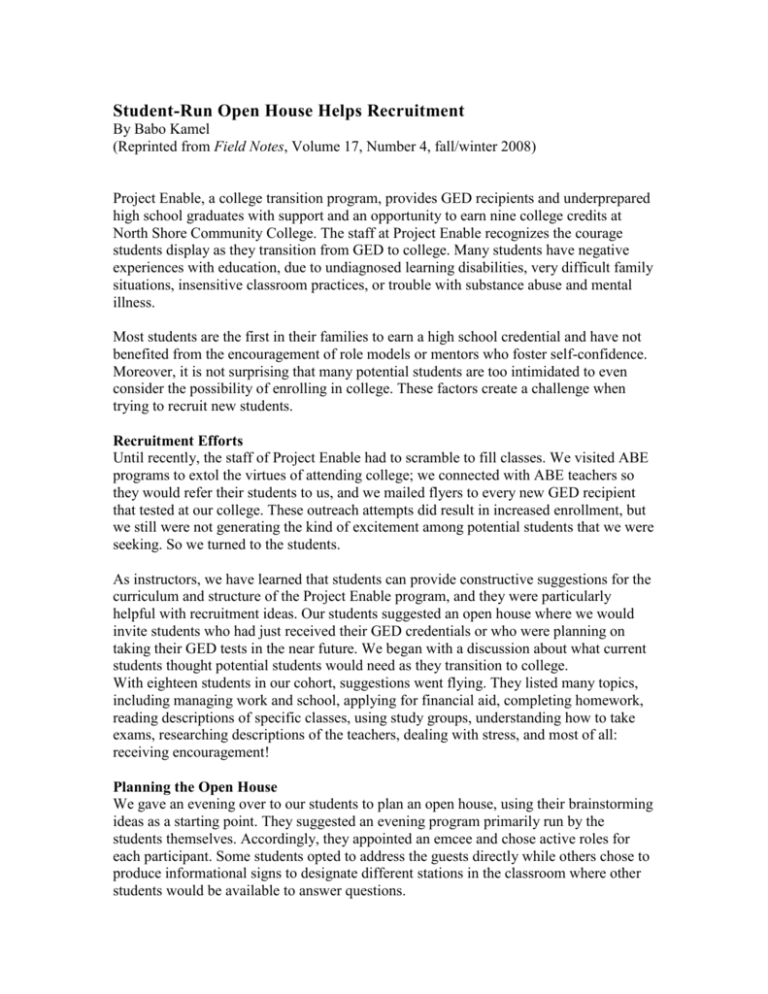
Student-Run Open House Helps Recruitment By Babo Kamel (Reprinted from Field Notes, Volume 17, Number 4, fall/winter 2008) Project Enable, a college transition program, provides GED recipients and underprepared high school graduates with support and an opportunity to earn nine college credits at North Shore Community College. The staff at Project Enable recognizes the courage students display as they transition from GED to college. Many students have negative experiences with education, due to undiagnosed learning disabilities, very difficult family situations, insensitive classroom practices, or trouble with substance abuse and mental illness. Most students are the first in their families to earn a high school credential and have not benefited from the encouragement of role models or mentors who foster self-confidence. Moreover, it is not surprising that many potential students are too intimidated to even consider the possibility of enrolling in college. These factors create a challenge when trying to recruit new students. Recruitment Efforts Until recently, the staff of Project Enable had to scramble to fill classes. We visited ABE programs to extol the virtues of attending college; we connected with ABE teachers so they would refer their students to us, and we mailed flyers to every new GED recipient that tested at our college. These outreach attempts did result in increased enrollment, but we still were not generating the kind of excitement among potential students that we were seeking. So we turned to the students. As instructors, we have learned that students can provide constructive suggestions for the curriculum and structure of the Project Enable program, and they were particularly helpful with recruitment ideas. Our students suggested an open house where we would invite students who had just received their GED credentials or who were planning on taking their GED tests in the near future. We began with a discussion about what current students thought potential students would need as they transition to college. With eighteen students in our cohort, suggestions went flying. They listed many topics, including managing work and school, applying for financial aid, completing homework, reading descriptions of specific classes, using study groups, understanding how to take exams, researching descriptions of the teachers, dealing with stress, and most of all: receiving encouragement! Planning the Open House We gave an evening over to our students to plan an open house, using their brainstorming ideas as a starting point. They suggested an evening program primarily run by the students themselves. Accordingly, they appointed an emcee and chose active roles for each participant. Some students opted to address the guests directly while others chose to produce informational signs to designate different stations in the classroom where other students would be available to answer questions. The instructor wrote all the suggestions on the blackboard. Then the students further refined the order of events through class discussions. Together we came up with an agenda for the evening that would begin with a welcome address followed by individual students describing different aspects of the program. These aspects included an overview of the classes, descriptions of instructors, and a review of the homework load. Other topics included financial aid, cultural opportunities, group projects, stress management, and career exploration. The two instructors of the program offered to organize refreshments. The students then went home to work on their speeches and signs; they completed these assignments over the course of a week. When they reconvened they engaged in a practice run of the open house during class time. Once they were satisfied with the program, they asked the instructors to invite students from ABE programs in our area. The coordinator emailed the invitation to the contact people at ABE centers and followed up with phone calls. Success! The actual open house took place three weeks after the initial planning with over 35 guests attending. The students served refreshments, and the emcee welcomed the guests to the classroom. They also asked guests to sign an attendance sheet so follow up calls could be made by the coordinator. To date we have held four open houses designed solely by students for students, and the results have been terrific. Because our program is one semester long, we hold the event twice a year. Our latest open house had to be moved to a lecturehall to acommodate the 60 students who attended. Not only have we been attracting more students to our program, but the hosting students take on leadership roles and experience their own success. The hosting students often take control of this event with ease, and hidden talents surface frequently, allowing comedians, public speakers, educators, and successful and confident students to emerge. Many of the students who enrolled last semester expressed that it was hearing the testimonies from fellow students that gave them the confidence to apply. It has become clearer to us that one of the highlights students experience in our program is being able to act as mentors and leaders to a new generation of students. And what better way to attract new students then to employ current students in the act of recruitment? Babo Kamel is the coordinator of Project Enable at North Shore Community College. She can be reached at <bkamel@northshore.edu>.
